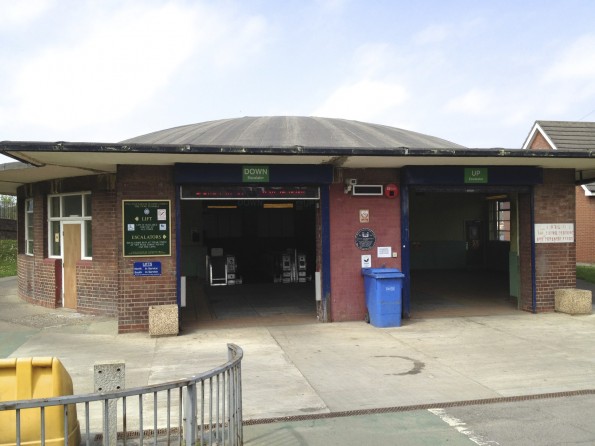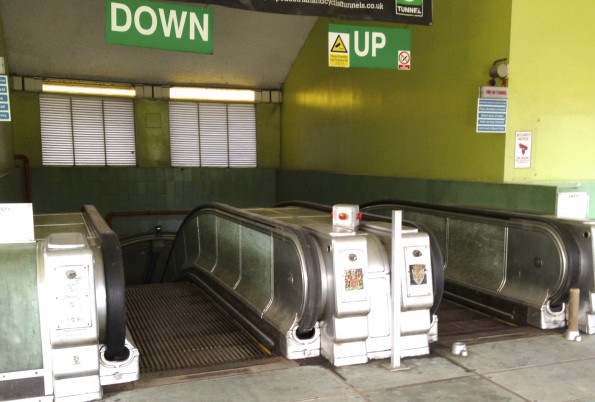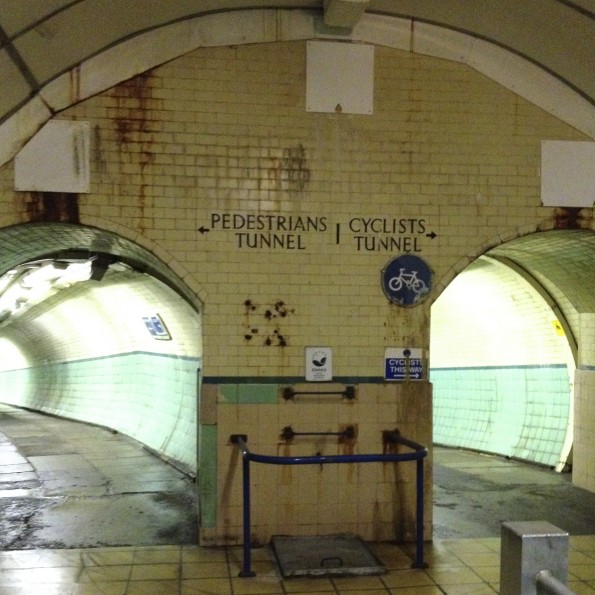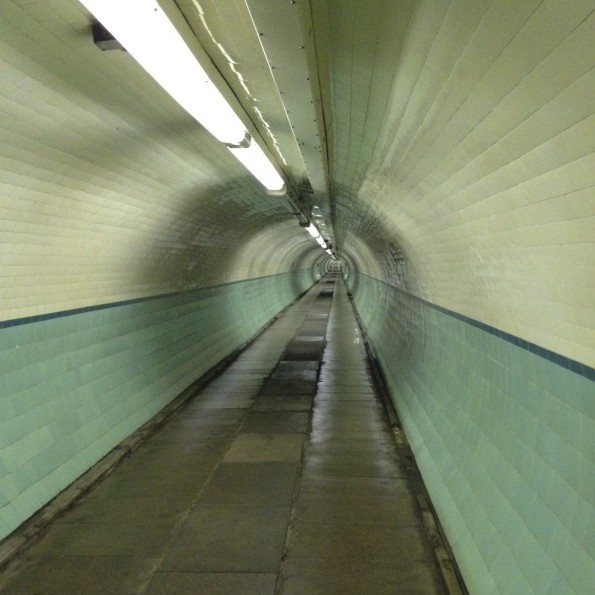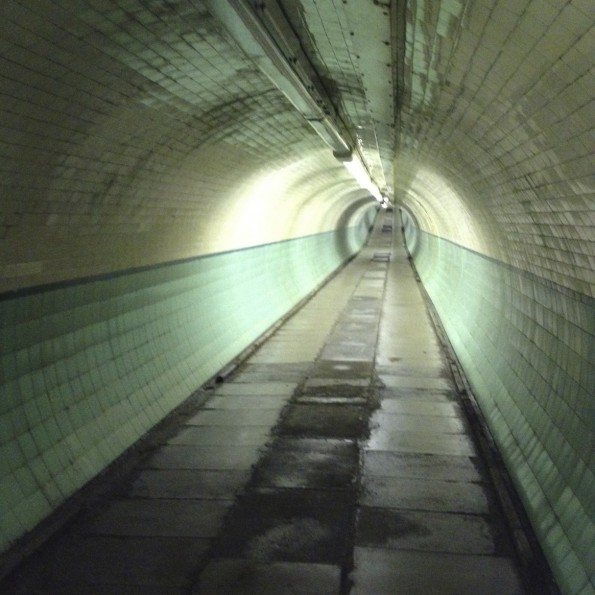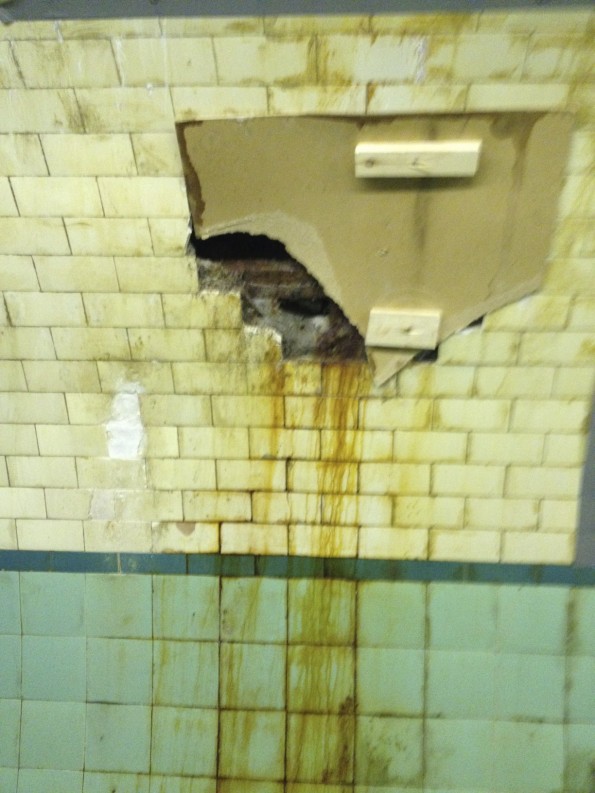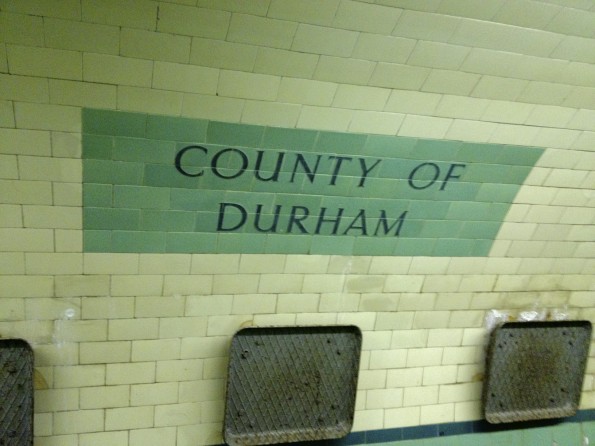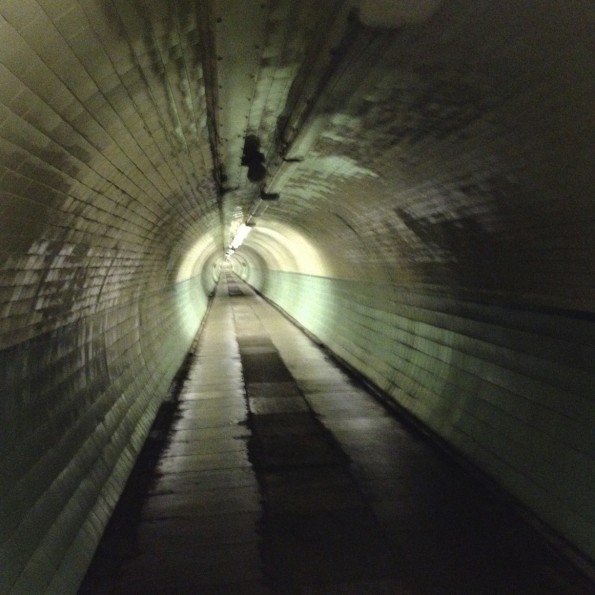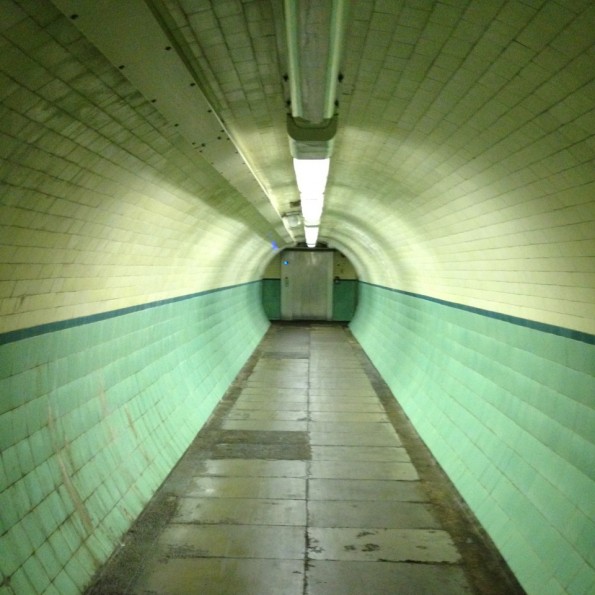Tyne Pedestrian and Cycle Tunnels
I visited the Tyne Pedestrian and Cycle Tunnels on 29th May 2012, mainly to take a photo for my photo-a-day series. But I got a bit carried away, so here’s the excess!
The tunnels opened in 1951, some 16 years before the better-known vehicle tunnel, which now funds their upkeep. They are free to enter, open 24hrs per day, and are still used by about 20,000 people each month; some people use them daily. Despite this, they are unusually well preserved, like a portal back to the 1950s. I also found the experience a little bit freaky. But I’m getting ahead of myself. Here’s a pretty plaque:
Both the north and south entrances to the tunnel are housed in rotunda-like buildings, that have the look and feel of stations… but no trains. Here’s the south entrance:
On entering the building, you’re presented with two escalators, labelled “up” and “down”:
You might wonder why the escalators are labelled: as an energy-saving measure, the escalators only used to run when they were boarded, rather than running all the time. Hence, a sign is needed to make sure people get on the right one. I say “used to” as none of the escalators work now – but they are remarkable and quite beautiful.
The escalators are rare remaining examples of wooden escalators – at 200ft, the longest single-span wooden escalators in the world, in fact. At the time they were installed, they were the longest escalators in the world full stop, until overtaken by Angel underground station in London. There are plans to replace one escalator at each end with one that actually works, but the other two are to remain in respect of their remarkable heritage.
The workmanship of the escalators is also quite remarkable: each step has its number individually stamped upon it:
As I walked down the stationary escalator, the air temperature became noticeably lower, and the smell of damp gradually became stronger. It was actually a mildly heart-rate increasing experience, descending into the unknown darkness, alone…
On arrival at the bottom, there’s a choice:
While people constantly complain about declining grammar standards, it’s interesting to note that even in the early 1950s, people were failing to use apostrophes correctly!
The cyclists’ tunnel is slightly wider than the pedestrians’ tunnel, but otherwise they’re much the same. I entered the pedestrians’ tunnel:
The tunnels are cold and smell damp. It is very quiet down there, except for the occasional distant echo of other tunnel users – it is an extremely echogenic environment. Much like the vehicular tunnel, it works its way downhill for half the length, before turning uphill.
You’ll notice that the tunnel looks very damp, as well as smelling that way. Here and there in the tunnel, the walls look really very damaged – it’s slightly unnerving to know that you are beneath the River Tyne at these points:
Half way through, there is a dividing line to show the division of the county boundaries. I’m not sure what the rusty plates attached to the walls once held:
;
Now and again, there is a run of broken lights, plunging the tunnel into a disconcerting dimness:
The north end of the tunnel has similar escalators to the south end, but since these aren’t working, I branched off the main tunnel towards the lift. I don’t mind climbing down the longest wooden escalators in the world, but walking up them is asking a bit much:
That’s about all the picture I have from my visit – I hope you found that an interesting brief photographic tour! I found my visit fascinating, but the tunnels certainly aren’t for the claustrophobic, and I’m fairly glad that they don’t feature as part of my own daily commute!
This post was filed under: Photos.


